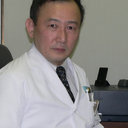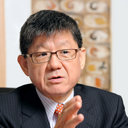Golimumab monotherapy in Japanese patients with active rheumatoid arthritis despite prior treatment with disease-modifying antirheumatic drugs: results of the phase 2/3, multicentre, randomised, double-blind, placebo-controlled GO-MONO study through 24 weeks.
Keywords
Abstract
OBJECTIVE
To evaluate the efficacy and safety of golimumab 50 and 100 mg monotherapy in Japanese patients with active rheumatoid arthritis (RA) despite treatment with disease-modifying antirheumatic drugs (DMARDs).
METHODS
A total of 316 patients were randomised to receive subcutaneous injections every 4 weeks of placebo (group 1), golimumab 50 mg (group 2) or golimumab 100 mg (group 3); group 1 crossed over to golimumab 50 mg at week 16. The primary end point was the proportion of patients achieving ≥20% improvement in the American College of Rheumatology criteria (ACR20) at week 14. ACR50 and ACR70 response rates were also measured. Adverse events (AEs) were monitored throughout the study.
RESULTS
Demographics were similar across groups; the mean age was 52 years and 81.8% of patients (252/308) were female. Week 14 ACR20 response rates were significantly greater in groups 2 (51/101 (50.5%)) and 3 (60/102 (58.8%)) than in group 1 (20/105 (19.0%); p<0.0001 for both), as were ACR50 and ACR70 response rates. After placebo crossover at week 16, week 24 ACR response rates were similar in groups 1 and 2. Through week 16, 63.8% of patients in group 1, 62.4% in group 2 and 60.8% in group 3 had AEs and 1.9%, 1.0% and 2.0% had serious AEs. After week 16, one malignancy was reported (breast cancer, group 3). Infections were the most common AEs. No deaths or cases of tuberculosis were reported through week 24.
CONCLUSIONS
Golimumab monotherapy (50 and 100 mg) was effective in reducing the signs and symptoms of RA in Japanese patients with active disease despite DMARD treatment.





